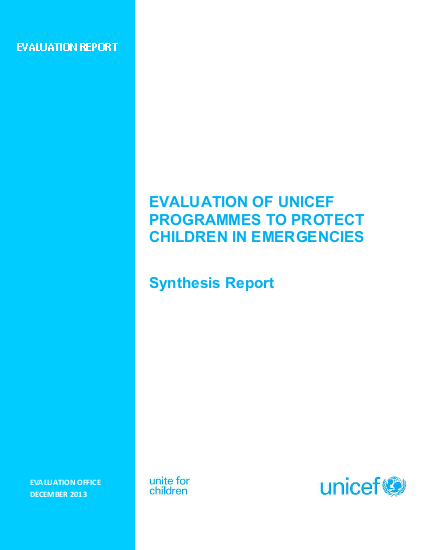
Trends in the nature of armed conflicts and disasters are increasing both the scale and scope of protection issues affecting children and women in humanitarian contexts. After a decade of decline in the number of armed conflicts, since 2010 there has been an escalation in armed conflict globally.1 By 2012, more people were refugees (15.4 million) and internally displaced (28.8 million) than at any time since 1994.2 Nearly half of these people are children.
Children affected by armed conflict are subject to a wide range of protection violations and issues. These include separation from families; killing and maiming through combat or as a result of explosive remnants of war (ERW); being recruited or abducted by armed forces or armed groups; becoming survivors of sexual or physical violence or witnessing acts of violence; being detained; and even being subject to torture. Schools and health facilities are attacked and many children’s opportunities for the future are curtailed, especially in protracted contexts.
